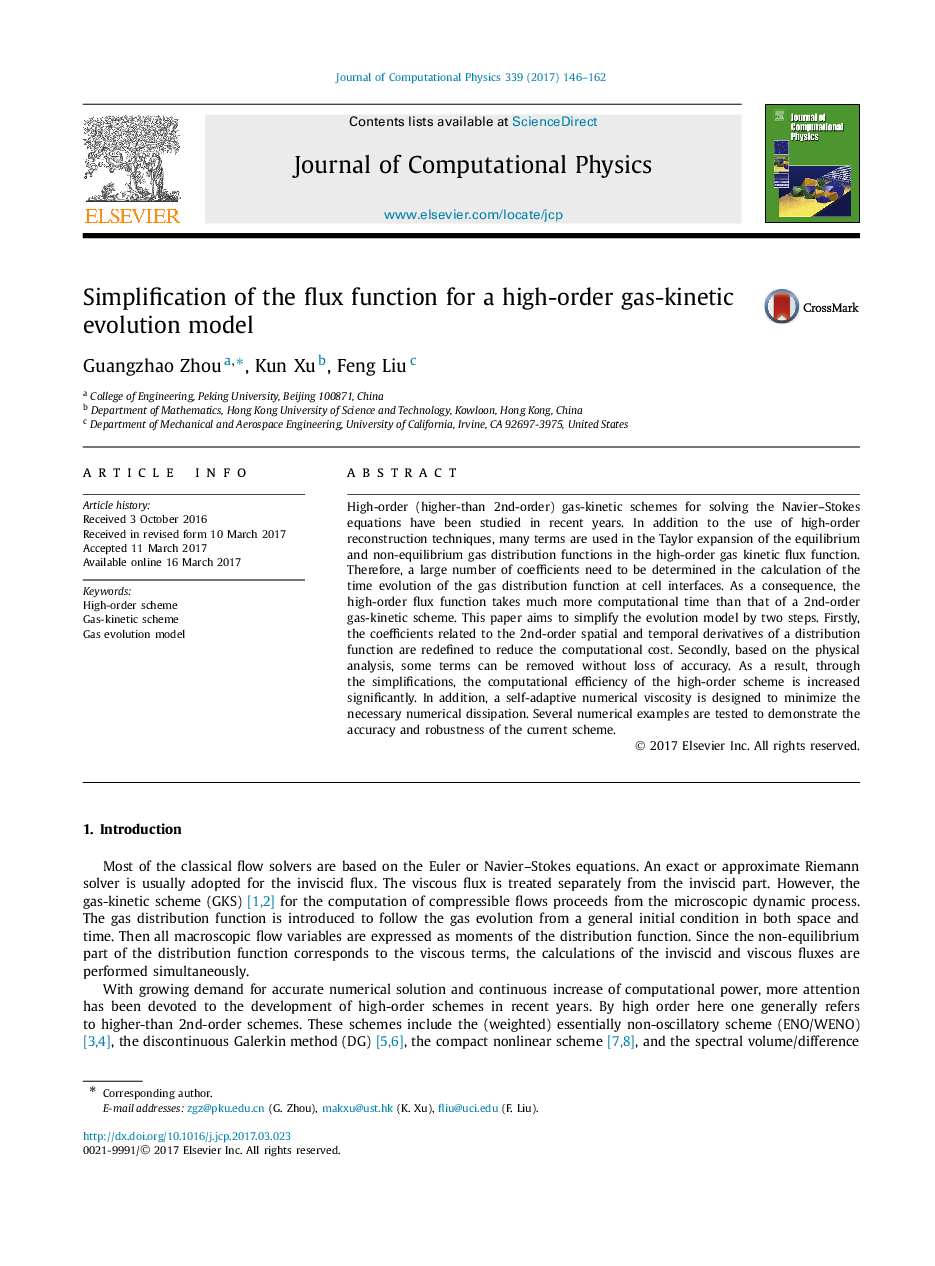| Article ID | Journal | Published Year | Pages | File Type |
|---|---|---|---|---|
| 4967610 | Journal of Computational Physics | 2017 | 17 Pages |
Abstract
High-order (higher-than 2nd-order) gas-kinetic schemes for solving the Navier-Stokes equations have been studied in recent years. In addition to the use of high-order reconstruction techniques, many terms are used in the Taylor expansion of the equilibrium and non-equilibrium gas distribution functions in the high-order gas kinetic flux function. Therefore, a large number of coefficients need to be determined in the calculation of the time evolution of the gas distribution function at cell interfaces. As a consequence, the high-order flux function takes much more computational time than that of a 2nd-order gas-kinetic scheme. This paper aims to simplify the evolution model by two steps. Firstly, the coefficients related to the 2nd-order spatial and temporal derivatives of a distribution function are redefined to reduce the computational cost. Secondly, based on the physical analysis, some terms can be removed without loss of accuracy. As a result, through the simplifications, the computational efficiency of the high-order scheme is increased significantly. In addition, a self-adaptive numerical viscosity is designed to minimize the necessary numerical dissipation. Several numerical examples are tested to demonstrate the accuracy and robustness of the current scheme.
Keywords
Related Topics
Physical Sciences and Engineering
Computer Science
Computer Science Applications
Authors
Guangzhao Zhou, Kun Xu, Feng Liu,
